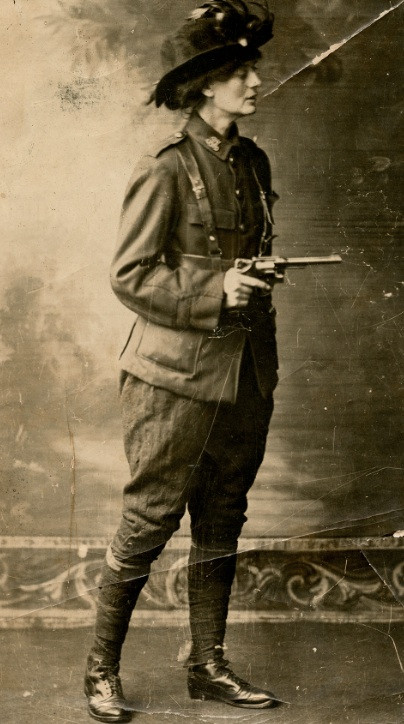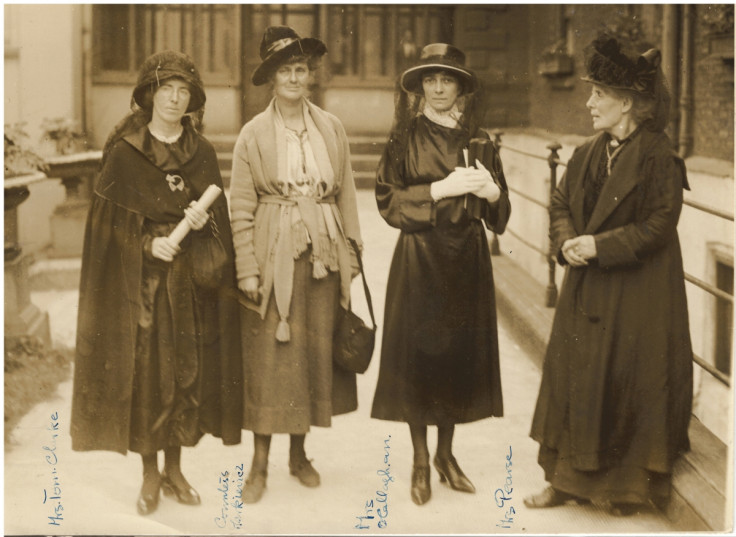Easter Rising 1916 centenary: Rare photos of bombed-out shell of Dublin exhibited in London

The Easter Rising 1916 exhibition at the Photographers Gallery, London, covers key events between the 1840s and 1930s that led to Irish independence from the British Union. The exhibit draws from Sean Sexton's collection and features 80 images ranging from portraits of executed leaders, evictions, hunger strikers, souvenir postcards, albums, stereoscopic views, press and military photographs.
The Easter Rising of 1916 occurred over Easter weekend as an armed rebellion of Irish Republicans that rose against British Rule in a bid to establish an independent Ireland, amid the backdrop of The First World War. Key locations were seized around Dublin and an independent Irish Republic was proclaimed. The British army suppressed the rising, and many of its leaders were executed.
Due to the costly and cumbersome nature of photography, when the rebellion finally broke out on 24 April 1916, the action itself was largely undocumented. Most of the surviving images were taken in the immediate aftermath and nearly all concentrate on the hostilities in and around the General Post Office on O'Connell St (then Sackville St). These stark scenes depict a bombed-out shell of Dublin, routinely referred to pre-rebellion as 'the second capital of the Empire'.

Following six days of fierce clashes in which hundreds were killed and injured, the largely outnumbered rebel militias surrendered. Martial law was imposed across Ireland and leaders of the uprising were summarily executed.
Before long their portraits, alongside photos of the site of execution in the prison yard at Kilmainham Jail, became widely available and informed a fresh groundswell of support for the Republican movement.
The 1916 Easter Rising set off a series of events – the War of Independence, the Irish Civil War and the Partition of Ireland - that ultimately lead to establishment of the Irish Free State in 1922.
Exhibition curator Luke Dodd's favourite images is of four women who were prominently involved in the struggle for the Republicans.
"All four were either personally involved in the Rising or close to somebody who was. In the immediate aftermath, they remained resolutely committed to the Republican cause and the inclusive idealism it had embodied.
"They were also vehemently opposed to the Anglo-Irish Treaty. Clarke, Markievicz and O'Callaghan were elected as Sinn Féin MPs but refused to take their seats in Westminster. The tragic irony of the photo is how the idealism that this generation of women fought so hard for was completely reneged upon in the Irish Constitution of a generation later."
The photographs were a powerful tool to support the Irish Republican movement. "They were used to bolster anti-imperialism and foster anti-British sentiment," says Dodd. "In particular, photographs of hunger-strikers and members of the IRA killed in action provided a crucial rallying point for Republicans. Many houses in Ireland displayed prints of the heroes of the 1916 Rising for generations."

Easter Rising centenary
At Easter, there will be an extensive programme of events in Dublin, to commemorate this turbulent era in Ireland's history.
Arlene Foster, who became first minister of Northern Ireland on 11 January, said she will not be attending any events to commemorate the centenary of the Easter Rising. In an interview for the BBC on the eve of her selection as first minister, the Democratic Unionist Party leader called the 1916 Rising "a very violent attack on the state" that "gave succour to violent republicanism."
At 45, Foster is Northern Ireland's youngest first minister and its first female head, succeeding Peter Robinson. Foster, from the Protestant border area of Co. Fermanagh, experienced IRA terror when her father was shot in an attempt on his life when she was only six.
She believes the late IRA activist Seamus McElwaine was behind the attempt to kill her father, a part-time policeman. A decade later she was almost killed at age 16 when the IRA tried to bomb a school bus to kill its driver, who was a part-time member of the security forces in the North. Nobody was ever prosecuted for the attack.
Foster said 2015 had been "turbulent" for Northern Ireland, but added: "We dealt with it by talking to each other, negotiating and planning for the future." Speaking about her own past, she said: "I have been a victim of IRA violence. I carry that with me."
At the launch of Ireland 2016, Ireland's prime minister Enda Kenny said: "There are some moments in history when a seed is sown and the old order changes forever. Easter 1916 was a moment when Irish nationalism joined forces with a revolutionary cultural and language movement to forge an irresistible campaign towards self-determination.
"It is important that the Irish people have the opportunity to come together to celebrate and have pride in Ireland's independence, and to honour those who gave their lives so that the dream of self-determination could become a reality".

© Copyright IBTimes 2025. All rights reserved.






















